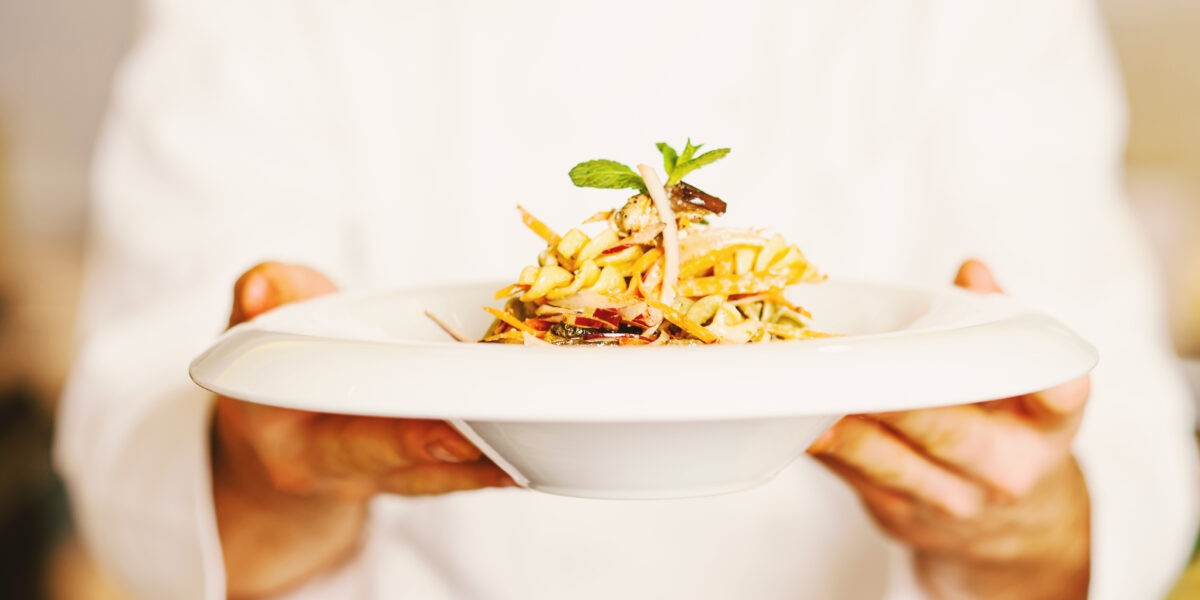For the American restaurant culture, 2015 was the year of enthusiastic nautical decor (boat ropes, life-sized buoys, natural and sustainable materials, Edison lightbulbs, contemporary color palettes), imaginative dishes including everything from briny olives to mashed potatoes to marinated pickles to Korean BBQ tacos (seriously, is it time for lunch?), and even more uber-elaborate cocktails with rare spirits, hand-cut herbs and artisan ice cubes.
As we enter into a new year, industry leaders recognize the continuing shift towards a more relaxed, affordable, intimate, and collaborative dining experience. Culinary enthusiasts are seeking out restaurants that provide extremely friendly price points while also expecting a higher quality product. So as the competition continues to increase and evolve, it’s absolutely imperative for restaurant brands to maintain a strong social media presence that keeps them authentically engage with their audience. Here are five social media marketing tips from our team that will help you maximize your efforts:
Consistency is key:
Maintaining consistency on your digital channels is about more than the frequency of your message. Maintaining a consistent tone in your tweets, Facebook, and LinkedIn updates, while understanding your unique audience segments on each platform – is key. Developing and creating consistent, relevant, content is a ton of work, so it’s far better to start slow and steady. Despite popular belief that everything you post will go “viral,” a true social media marketing strategy should focus on long-term efforts – slow and steady wins the race! Also, by following this rule of thumb, this will provide your followers with a realistic expectation of when they will hear from you, creating a pattern of user behavior in respect to your brand.
Think visually:
We know that visual content is far more effective and leads to increased engagement, especially on Facebook, and restaurants are at a unique advantage because the products their customers care about most can be displayed visually. It’s an easy sell. So, take photos of your product! Leverage highly visual channels like: Facebook, Instagram, Pinterest, and even Snapchat. Craft cocktails are in, and here to stay, so give your viewers what they want to see – your delicious food and awesome cocktails.
Control the conversation:
Your social media team members should be willing and ready to respond to questions and comments at anytime. Companies like Jet Blue, Nike, Air Asia, Starbucks, and Whole Foods rockcustomer service on social media. JetBlue makes it a point to respond not just to customers who @mention them, but also to customers who talk about the brand in general – even if they weren’t tagged in the post. This means that the company’s social media team is tracking and monitoring keywords and relevant hashtags extremely well so that ultimately, they can find and respond to more customers. Nike actually takes this one step further, and with over 4 million followers on Twitter, they’ve created a separate Twitter account specifically intended to responding to customer inquiries and issues (@NikeSupport). They’ve created a well-oiled customer service machine by responding to requests every few minutes. And by following this type of strategy, Nike customers feel their concerns are being validated while they’re receiving the timely customer assistance they require. Happy customers build brand ambassadors, and brand ambassadors generate recurring revenue.
Sidebar: we know what you’re thinking…”Nike is a multi-billion dollar company with the resources to support that type of strategy.” Indeed they are, but the premise is still the same and equally important for your brand, no matter how large or small. Remember that consistency is key over quantity, so maybe you dedicate one or two days a week where you respond to all customer service inquiries and let your customers know when that day is. Practice makes perfect.
Create plenty of ways for people to interact with all of your channels:
The ultimate goal for any restaurant owner is to grow and maintain recurring traffic as it comes through the restaurant. Therefore, some of your posts should incorporate a call to action of some kind to inspire interaction from your viewers. Like, maybe you direct users to check out your site to receive information on special menu items only available to those who click through a specific link. Consequently, your website should also provide easy access to your different social media platforms while incorporating SEO techniques to attract customers who are searching for certain keywords and topics about restaurants. Other strategies, like email newsletters, could include unique and relevant info that they can’t receive through other social media platforms. You get the gist, provide opportunities for people to interact with your brand in unique ways.
Invite collaboration:
User-generated content is the social gods’ gift to the digital universe. Rather than having your team constantly create unique content for all of your channels, effective social media marketing also incorporates repurposing user-generated content. You can encourage customers to share their experiences with you via a specific hashtag, invite your customers to check-in to your restaurant to receive something in return, run contests and repurpose photos or video – the possibilities are endless.
There you have it. With 77% of B-to-C marketers acquiring customers through Facebook, and over 90% of Twitter users reporting that they follow brands to receive special promos and discounts, a strong social media marketing strategy will continue to be vital for the success of restaurants within this competitive landscape. And on that note, we’re off to happy hour.




